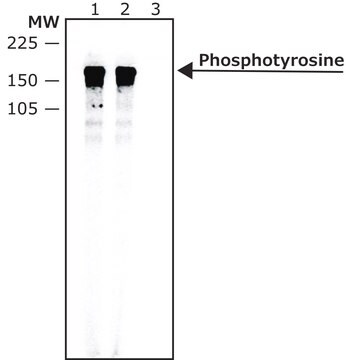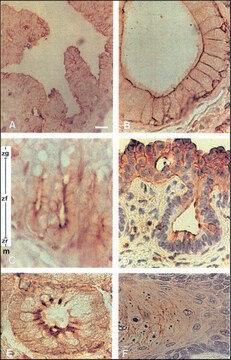P4110
Monoclonal Anti-Phosphotyrosine antibody produced in mouse
clone PY20, purified immunoglobulin, buffered aqueous glycerol solution
Synonym(s):
Monoclonal Anti-Phosphotyrosine, Phospho-Tyr, Phospho-tyrosine, p-Tyr
About This Item
Recommended Products
biological source
mouse
Quality Level
conjugate
unconjugated
antibody form
purified immunoglobulin
antibody product type
primary antibodies
clone
PY20, monoclonal
form
buffered aqueous glycerol solution
technique(s)
immunohistochemistry: suitable
immunoprecipitation (IP): suitable
western blot: suitable
isotype
IgG2b
shipped in
wet ice
storage temp.
−20°C
target post-translational modification
phosphorylation (pTyr)
Looking for similar products? Visit Product Comparison Guide
General description
Monoclonal Anti-Phosphotyrosine is specific for both native and denatured proteins containing phosphorylated tyrosine.
Immunogen
Application
Physical form
Disclaimer
Not finding the right product?
Try our Product Selector Tool.
Storage Class Code
12 - Non Combustible Liquids
WGK
nwg
Flash Point(F)
Not applicable
Flash Point(C)
Not applicable
Certificates of Analysis (COA)
Search for Certificates of Analysis (COA) by entering the products Lot/Batch Number. Lot and Batch Numbers can be found on a product’s label following the words ‘Lot’ or ‘Batch’.
Already Own This Product?
Find documentation for the products that you have recently purchased in the Document Library.
Our team of scientists has experience in all areas of research including Life Science, Material Science, Chemical Synthesis, Chromatography, Analytical and many others.
Contact Technical Service








